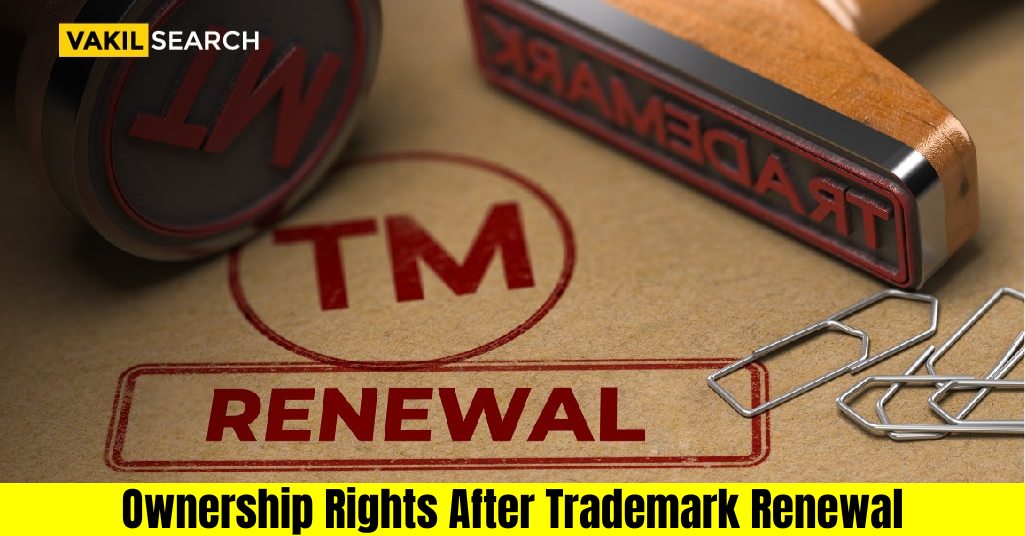Intellectual property law grants private rights, but more and more states are preparing to enact stronger provisions of intellectual property protection that require forfeiture of ownership rights after trademark nomination falls into an indefinite delay. Frequently, this happens when an owner of the registered trademark has sufficient time left before expiration or withdrawal.
Ownership Rights After Trademark Renewal – Introduction
Trademark renewal is the process of legally renewing a registered trademark. It typically occurs after a mark’s original registration has expired and before it can be canceled. This blog discusses about Ownership Rights After Trademark Renewal in detail.
Steps for Trademark Renewal
- Filing an application
- Serving the public notice
- Responding to objections
- Issuing a renewed registration
Each step may have different requirements, so it’s important to consult with an attorney if you’re thinking of applying for trademark renewal.
Types of Trademarks
As a business owner, you know that your trademarks are one of your most valuable assets. It’s important to keep them updated and protected, and there are several different types of trademarks – Service Mark, Collective Mark, Certification Mark, Shape Mark, Pattern, and Sound Mark.
What Happens After a Trademark Register Is Already Registered
When your trademark is registered, it’s considered pending for a few reasons. The first reason is that when you register your mark, you are required to provide a filing fee and complete other paperwork. Once this paperwork has been completed, the Trade Marks Registry India will change the mark’s status – this means checking to see if it meets all of the legal requirements for trademark registration. After this, the Trade Marks Registry India will issue a ‘certificate of registration’, confirming that your mark is officially registered.
Now that your mark is registered, the next step is to keep it updated with any new filings or updates. Any changes that need to be made to a pending trademark should be made as soon as possible to avoid any potential problems down the line.
You can check trademark availability with Vakilsearch’s free trademark search tool before registering a trademark.Eligibility Requirements for Ownership Rights of an Unregistered or Previously Examined Trademark
The most important eligibility requirement is that the mark is registered with the Trade Marks Registry India. Next, you must also meet the organisation’s general trademark registration eligibility requirements, such as being In Good Standing. Finally, once your mark has been registered and meets its due, you must submit a Trademark Renewal Application (TRA) to maintain your exclusive rights to it.
If you own an unregistered and/or previously examined name, you are not eligible to file for renewal of trademark in India. The owner must have registered the mark with the Trade Marks Registry India to renew a mark.
If your mark is not currently registered, you will need to meet the general trademark registration eligibility requirements set forth by the registry to file for a new trademark. After meeting these eligibility requirements, you will then need to submit a Trademark Renewal Application when the mark is at its due.
Barriers to Trademark Renewal
Trademark renewal can be a cumbersome and expensive process, but there are several barriers to renewing a trademark that one should be aware of.
First, federal law requires a filing date for all trademarks. This means that any mark that has been registered with the Trade Marks Registry India has a due date – usually ten years from the date of filing – by which it must be renewed. If the mark is not renewed on or before the due date, it will lose its status as a trademark and may be exposed to other parties who may try to use it commercially.
Second, a trademark classification determines the type of notification required for renewal. As per NICE, trademarks are issued for 45 different categories, out of which 34 are issued for goods, and 11 are for services. Based on your TM classification, you may need to file the renewal.
A mark that is used in only one country may only require notification in that country, while a mark used in many countries may require notification in all countries where it is used. In addition, certain classes of marks are automatically notified each time they are registered.
Ownership Rights
Ownership rights of a trademark are the exclusive rights to use, sell, and license intellectual property. They can be transferred in some cases. You need to fill out the trademark application with relevant information to register for ownership rights. The owner then needs to pay the government filing fees and publication costs. After paying these fees, the mark will enter into force for protection.
Conclusion
In conclusion, understanding ownership rights after trademark renewal is essential for businesses to protect their brand identity. Businesses ought to always have a thorough understanding of the procedure and the steps that must be taken for a successful renewal application. The Trademark Priority List, or TPL, should be known about and utilized whenever possible. Always keep an eye on any changes in the market that could have an effect on the trademark, and take the necessary precautions to guard against possible infringements.
Also, Read:

